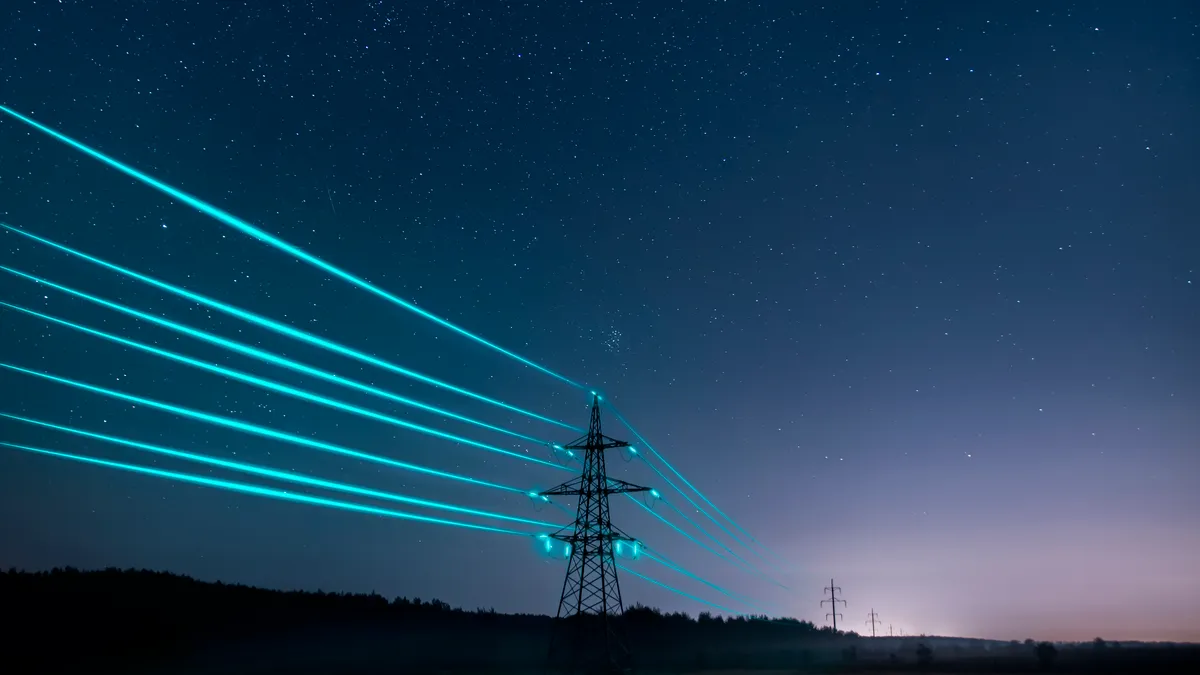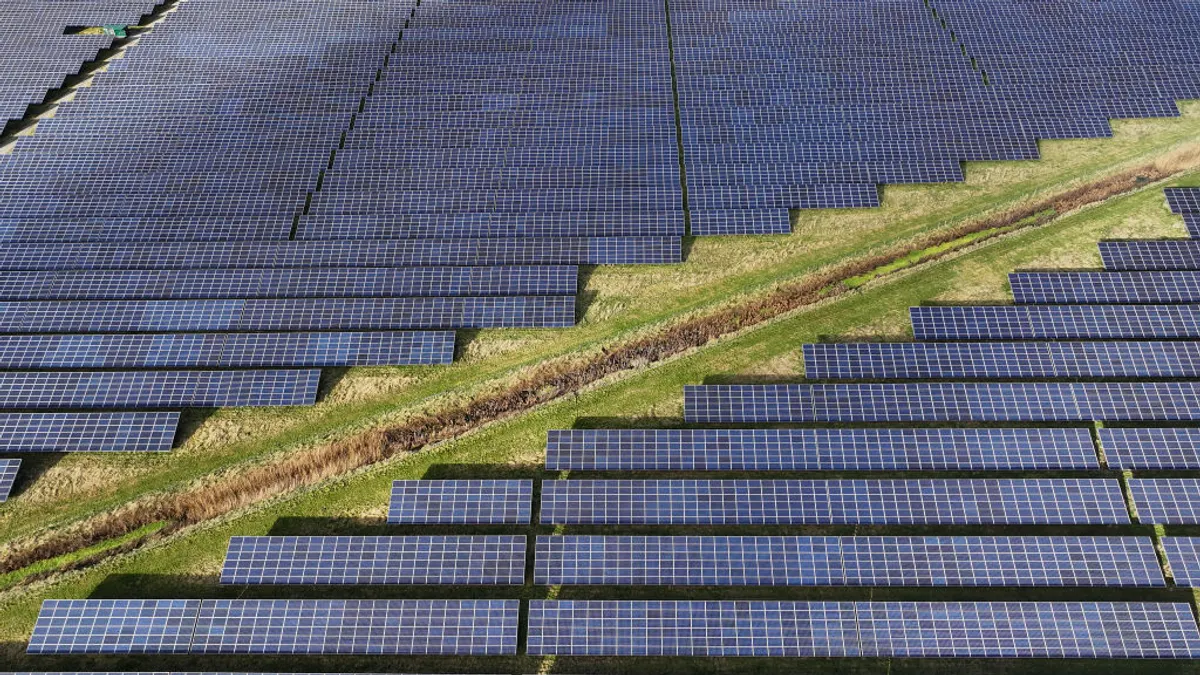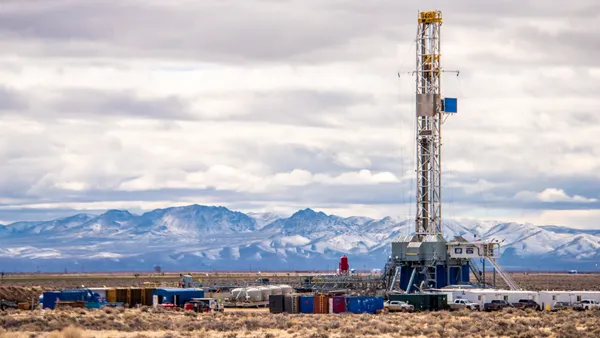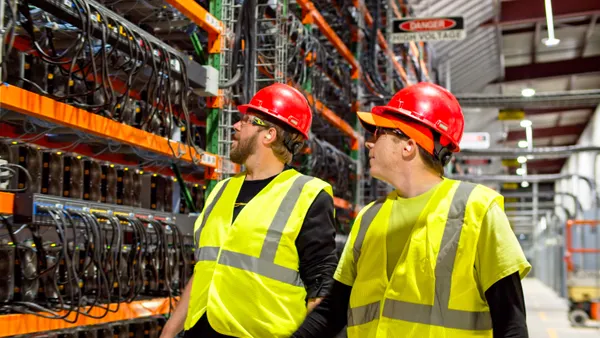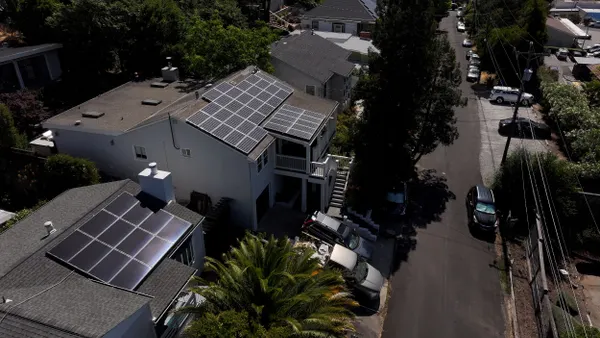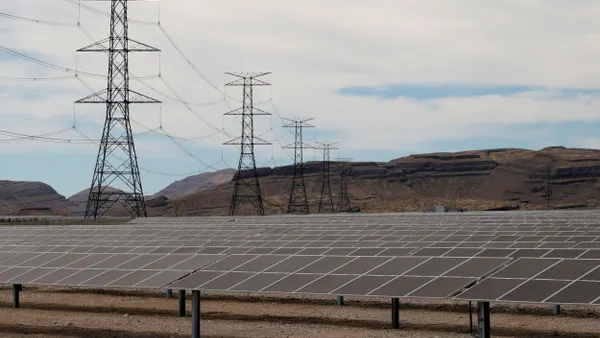Dive Brief:
- National Grid and VEIR are working to use super-cooled liquid nitrogen to advance superconductivity in transmission, a key step to deliver greater volumes of clean energy.
- The partners are developing a pilot project to test VEIR’s technology, which could provide five to 10 times the capacity that conventional transmission lines can handle, the companies say.
- A prototype could be developed in five years, and high-capacity transmission could be deployed by 2030, David Wright, National Grid’s chief engineer, said Tuesday.
Dive Insight:
VEIR, an early-stage technology company based in Woburn, Massachusetts, is developing the technology to achieve superconducting transmission over long distances. National Grid will work with VEIR on product development.
CEO Adam Wallen said VEIR is relying on National Grid’s experience running transmission systems to help accelerate the “safe and reliable deployment” of high-capacity lines.
David Wright, National Grid’s chief engineer, said a goal of the project is to connect more renewable resources on rights-of-way and other infrastructure and avoid costly and time-consuming permitting procedures for constructing new transmission lines.
“What we’re really focused on is, How do we deliver green power at scale in order to decarbonize both [the U.S. and U.K.] economies and show the world how to do it?” he said in an interview. “We're always on the lookout for real new technology and, particularly, how do you put a lot more capacity on rights-of-way.”
VEIR is not the only developer of technology National Grid considered, but it offers a “potential game-changer” in superconductors, Wright said. VEIR’s technology provides five to 10 times the capacity increase along transmission lines while others are incremental, increasing capacity by a magnitude of one or two, he said.
As part of the collaboration agreement, National Grid engineers will advise and comment on VEIR’s work during development with an emphasis on how best to integrate the new technology into the larger electric grid.
Conventional transmission relies on a growing physical footprint that includes higher voltage, taller towers and wide new rights of way, VEIR says. Over very long distances, a 500-kV high voltage, direct current transmission line loses 10% of its electricity to resistance every 1,000 miles, it says. In addition, conventional transmission relies on metal conductors, which have thermal limits, Wallen said. When excessive power is put through a metal conductor, transmission lines will melt, sag and catch fire, he said in an interview.
Wright said superconductivity calls for energy from evaporated liquid nitrogen cooled to as much as negative 250 degrees Celsius, effectively providing zero resistance and allowing large amounts of power to be transferred over long distances.
The problem is how to provide cooling evenly over long distances, he said. Using liquid nitrogen and the cooling energy from evaporation are a "really interesting prospect,” Wright said.
Previous high-temperature superconductor cable systems have used subcooled liquid nitrogen to maintain the systems at operating temperature. Costly and unreliable subcooling equipment was needed every 5 miles, however, “preventing the development of cost effective, long distance lines,” VEIR said.
The need for greater transmission is in response to a significant demand expected for electrification of heat and transportation, Wright said.
VEIR and National Grid are working in the lab and next plan to test the technology on a few transmission spans and increase the voltage in prototypes, according to Wright.



